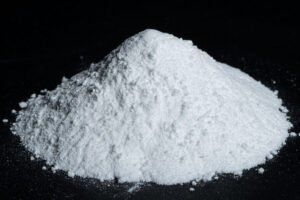Polyglycerol polyricinoleate (PGPR) is an emulsifier used in the food industry to improve the texture and stability of various products. Here are some key points about PGPR:
- Composition: PGPR is derived from glycerol and fatty acids, primarily ricinoleic acid obtained from castor oil. It consists of polyglycerol chains esterified with ricinoleic acid molecules. The number of glycerol units in the polyglycerol chain can vary, resulting in different molecular weights and properties.
- Production: PGPR is typically produced by the esterification of glycerol with ricinoleic acid, followed by purification processes to isolate the desired PGPR molecules. It can also be synthesized from other sources of fatty acids and glycerol, but castor oil is commonly used due to its high ricinoleic acid content.
- Function as an Emulsifier: PGPR functions as an emulsifier, helping to stabilize oil-in-water emulsions by reducing the interfacial tension between oil and water phases. It forms a protective layer around oil droplets, preventing them from coalescing and improving the dispersion of oil in water. This property is particularly useful in chocolate and confectionery products to ensure proper texture, smoothness, and mouthfeel.
- Chocolate Production: PGPR is widely used in the chocolate industry to reduce the viscosity of chocolate and facilitate the flow of chocolate during molding, enrobing, and coating processes. By improving the fluidity of chocolate, PGPR allows for faster and more efficient production while maintaining the desired texture and appearance of the final product.
- Fat Reduction: In addition to its emulsifying properties, PGPR can also function as a fat replacer in certain food products, allowing for the reduction of total fat content without compromising texture or sensory attributes. This can be beneficial for producing low-fat or reduced-fat food formulations while maintaining desirable mouthfeel and taste.
- Regulatory Approval: PGPR is approved for use as a food additive in many countries, including the United States and the European Union. It is generally recognized as safe (GRAS) when used within the recommended limits. Regulatory authorities such as the U.S. Food and Drug Administration (FDA) and the European Food Safety Authority (EFSA) have evaluated its safety for human consumption.
- Labeling: PGPR may be listed on ingredient labels of food products as “polyglycerol polyricinoleate” or by its abbreviation “PGPR.” It is typically identified by its E number, E476, in the European Union.









Reviews
There are no reviews yet.